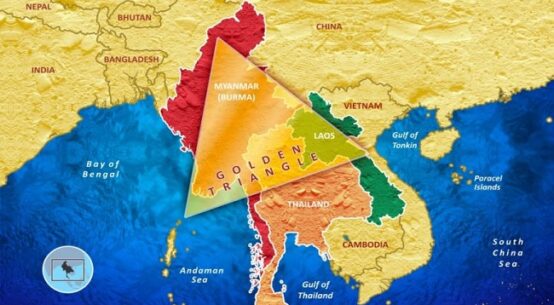
Twenty-two women make up a farming cooperative in El Crucero, Nicaragua, a municipality nestled on the slopes of the Sierras de Managua. For the last 15 years, they have banded together to grow what their rural community needs to eat. Coffee, corn, beans, tomatoes, lemons, carrots, and apples are among those food staples.
When harvesting the crops that help sustain the roughly 83 families living in the Santa Julia area, the Gloria Quintanilla Cooperative makes sure to set aside seeds for the long term. All producers work together to operate a seed bank, made up of two central silos where they deposit and naturally preserve backup seeds.
This ancient agricultural practice is known as seed-keeping or seed saving, where a community builds a cache of seeds to safeguard the crops that are crucial to their way of life.
“Each one of us produces, and each one collects the seed,” Lola del Carmen Esquivel González told Devex in Spanish. A 59-year-old farmer, González founded the self-funded co-op in 2008. “It is very important to learn to save the seeds for the service of the community.”
Their seed bank has become a means of survival as climate change has hit Nicaragua’s department of Managua hard, which has affected the food their community produces and consumes. For small, rural communities like Santa Julia, seed-keeping is becoming increasingly more important amid the disproportionate impacts of the warming planet on regions of the global south that primarily depend on subsistence farming.
“We have been fighting for water, school, roads, and for food security, which is the engine that drives us,” González said. “There are 12 months of the year that we try to survive from what we produce.”
A 2023 Famine Early Warning Systems report forecasted a deterioration of food security across the country due to price inflation, especially for food and cost of living, compounded by regional rainfall deficits. The ongoing El Niño has also been projected to exacerbate these impacts in Nicaragua’s municipalities in the Dry Corridor, per a 2023 ACAPS report, with up to 25% of crop loss expected for subsistence farmers.
Enduring water shortages have recently forced the cooperative to dip into their reserve of seeds. After facing back-to-back years of declining crop yields, they have switched up what they cultivate, and begun relying heavily on climate-resilient crops and seed varieties, such as cassava. The cassava seed — a starchy crop that is widely consumed in low- and middle-income countries — is more drought-tolerant than its potato counterpart.
“[Climate change] is worrying. Why is it worrying? Because we survive on production,” said González, before noting that more than two-thirds of people in her area “work only the land.”
The rapidly warming planet is already taking a toll on their growing seasons. In the past, she said they always used to prepare the land for sowing seeds in April, with many germinated by May. That hasn’t been possible for the last three years, as a lack of rainfall compounded by volatile weather patterns has meant they haven’t been able to begin the process until late June.
The delay does not give the plants the time they need to develop. More than one-third of the producers in Santa Julia lost their bean crop this year because of it.
“We survive on chili, we survive on bananas, on beans, on coffee,” González explained. Coffee is the cooperative’s cash crop — they grow, process, and sell it to local markets. “So if climate change is hitting and no water falls, then there is going to be famine,” she said.
The rise of hyperlocal seed banks
Spread throughout the global south are a multitude of similar seed banking initiatives, ranging in scope and size, where food crops are being painstakingly preserved for future growing purposes.
Somewhere high in the Andes mountains of Peru is the Potato Park, a seed bank run by and for Indigenous communities. Over in Los Baños, Philippines is the International Rice Research Institute, which has been scaling a supply of seed rice varieties since 1960. And the world’s largest repository for beans, cassava, and tropical forages opened last year outside of Cali, Colombia in the form of the Future Seeds gene bank.
But the bulk of seed-keeping ventures worldwide tend to operate on a smaller scale. With roots in indigenous farming practices, seed preservation is commonly deployed by rural farming communities reliant on the crops they produce for their food. Many have started seed-keeping to reclaim food sovereignty.
“A lot of seed-keeping and seed sovereignty work is often driven by peasant agricultural workers, Indigenous peoples in campesinos,” Kristen Wyman, co-director of the Global Movements Program at WhyHunger, told Devex. Wyman is Indigenous, a citizen of the Hassanamisco Band of Nipmuc in present-day Massachusetts. “They need the resources to do the work, but now they’re facing crisis and they’re the frontline responders to that crisis.”
A grassroots, intermediary, and technical support organization that works with social movements around the world, WhyHunger disbursed $10,000 in funding to the Gloria Quintanilla Cooperative in Nicaragua in October, in part to help them acquire and distribute additional seed silos. In Haiti, WhyHunger is helping the Mouvement Paysan de Papaye, a group of Haitian farmers, to stockpile banana and papaya seedlings in the face of dual climate and conflict crises affecting food production there.
The nonprofit is also aiding local farmers in southern Africa as they work to recover seed varieties destroyed by Tropical Cyclone Freddy through the Zimbabwe Smallholder Organic Farmers Forum.
Seed and food fairs, as well as seed exchanges, help lessen the climate burden on smallholder farmers, Wyman said. “The seed and the tenacity of the seed and the people who keep that seed is just very inspiring at a time like this.”
Why seed-keeping matters
There’s a demonstrated need for community-led seed-keeping approaches, said Zia Mehrabi, a researcher at the University of Colorado Boulder who studies food security and climate change.
“This has to be part of the solution,” Mehrabi said. “You can’t have a resilient food system without a really good stock of diverse seeds, that allows you to not only adapt to climate but also fulfill your nutritional needs.”
Meanwhile, hyperlocal seed banks often struggle to get the financial backing they need. This has proven to be the case for the organizations WhyHunger partners with. Small-scale farmers are “oftentimes vulnerable” to “big industry” coming in with “false solutions” and “making these suggestions of how they’re supposed to farm,” said Wyman.
Photo by: Cooperativa Gloria Quintanilla
A 2023 PNAS paper argued that seed production by public and private companies, or smallholder farms, is “limited” across the global south, “covering less than 20% of the seed demand for most food crops in many countries.” According to a report by CGIAR, a global network whose genebanks represent “the largest and most widely used collections of crop diversity in the world,” in 2017 half of its germplasm samples went to National Agricultural Research Organizations, 32% to advanced research institutes and universities, 13% went to farmers and individuals, and 4% to the private sector.
“There should be more institutional support for this,” said Mehrabi, noting the importance of community stewardship when it comes to seed diversification. “Governments should support this, there should be programs to help communities do this, and take action and have the agency to fulfill their rights. These are fundamental human rights — we’re talking about feeding people here.”
The need for more resources
Back in Santa Julia, the 22 women who have devoted more than a decade to fighting for increased food security for themselves, their families, and their neighbors see advancing their methods of seed preservation as central to their development. It’s a cornerstone to their survival amid the cascading toll of climate change.
“We have the knowledge, but we don’t have the material,” said González, describing their increasing need for water as well as additional seed silos. Resources to create natural fertilizers or stock tank planters, and the ability to grow more varieties of less water-intensive crops would also help expand their capacity for seed storage and crop diversification; solutions the Gloria Quintanilla co-op says they need more funding for.
“If each family had that in their plot, they would produce more food, save more seeds, and improve the family’s standard of living,” she noted.
The cooperative regularly barters with producers from surrounding communities when seed stockpiles run low. They’re having to do more and more of that as they continue to grapple with the byproducts of our warming world.
“There is a lot of food in the community when you save the seed,” González said.
Ayurella Horn-Muller is an award-winning journalist who has covered climate justice for Axios and Climate Central. Her work has been featured in The Atlantic, The Guardian, USA TODAY, NPR, and PBS NewsHour, among others.


